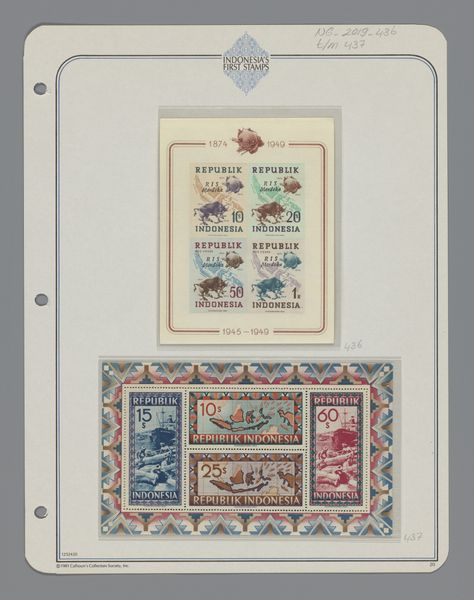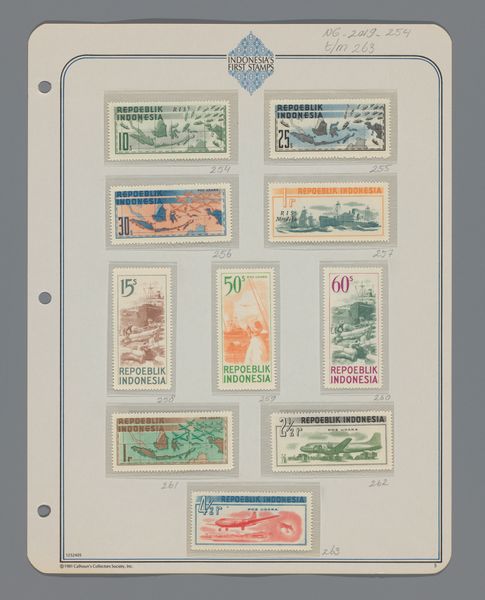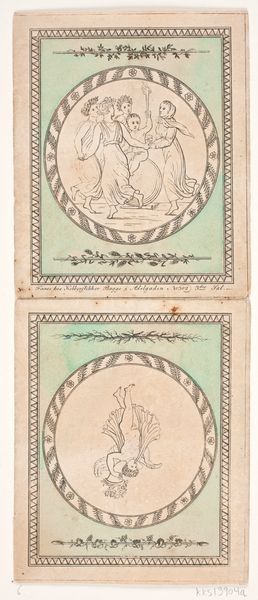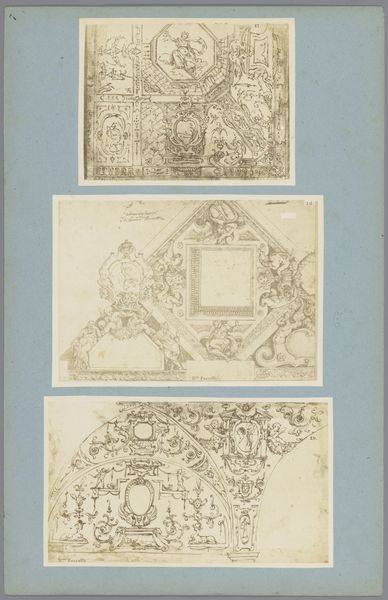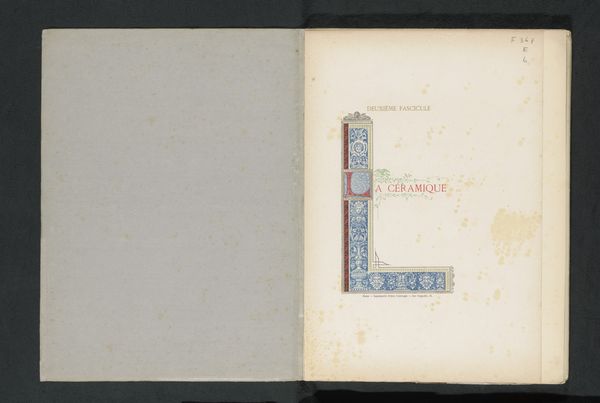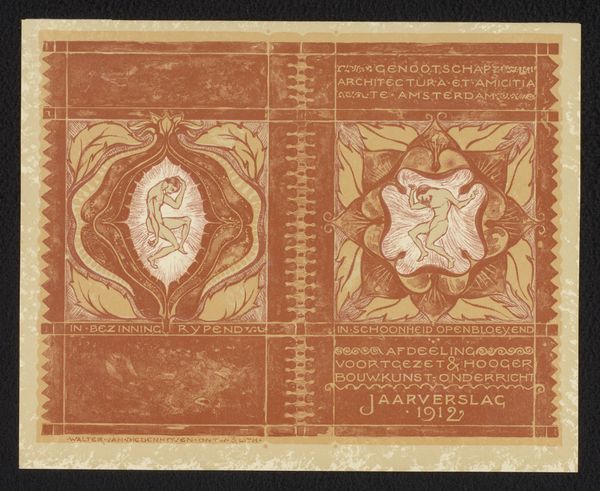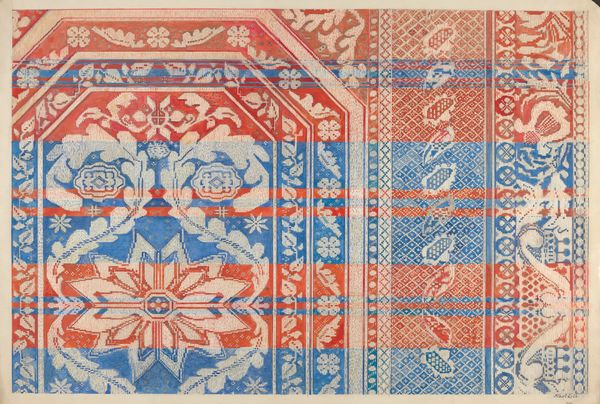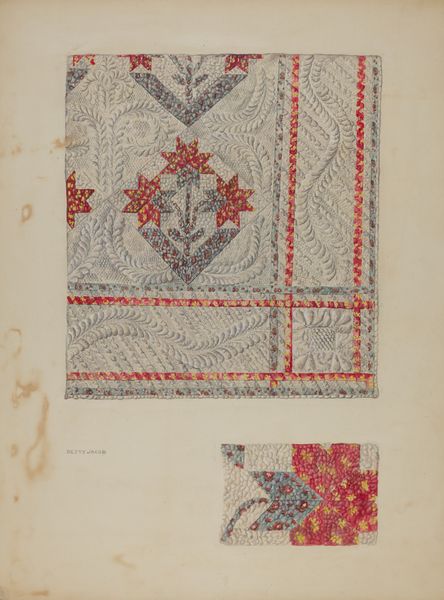
Dimensions: height 40 mm, width 30 mm
Copyright: Rijks Museum: Open Domain
Curator: Today, we're examining "Postzegel Republik Indonesia," stamps designed by Staatsdruckerei Wien in 1949. What are your initial impressions? Editor: I’m immediately struck by their diminutive scale and muted palette. It gives them an air of both fragility and historical gravity, almost like faded photographs from a pivotal moment. Curator: Indeed. As graphic art, each stamp contains layered meaning. The compositions rely on simplified shapes, rhythmic color blocking, and the superimposition of text. The subtle repetition and controlled color scheme achieve remarkable harmony, particularly evident in the ornate borders. Editor: And what are those images intended to represent? We see airplanes, figures carrying what appear to be flags, and maritime scenes with people and what looks like a lighthouse. It's like a visual encapsulation of national identity being forged in the wake of revolution. Curator: Precisely. The airplanes, recurring across multiple stamps, likely symbolize progress and connectivity for the newly formed republic. Consider also the heroic figures bearing flags, suggesting themes of liberation and sovereignty. The stamp becomes a symbol in itself. Editor: Right, flags are themselves a visual language of national pride. And in several stamps, they seem to be depicted alongside figures that evoke strength. What kind of symbolism is suggested with the imagery on the 50s stamp? Curator: The scene showing what looks like Indonesian archipelago fauna probably represents the rich natural resources of the nation and an assertion of ownership. Notice also the orientation, shape, and texture. They're arranged within the framework established by lines and limited color. Editor: Yes, even something as utilitarian as a stamp becomes a tiny vessel carrying cultural weight. There's this incredible density of encoded ideas crammed into each small frame, hinting at the optimism and challenges facing a young nation. I find it quietly moving. Curator: It is interesting to analyze how they employed such graphic techniques and these color relations to reflect Indonesia's burgeoning national identity. The images on display are deeply entrenched in the values they sought to establish at that time. Editor: So true. Well, after this dialogue, I look at them, and they seem larger, grander than stamps.
Comments
No comments
Be the first to comment and join the conversation on the ultimate creative platform.
